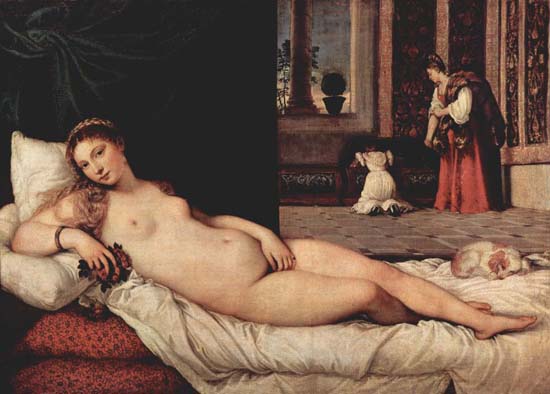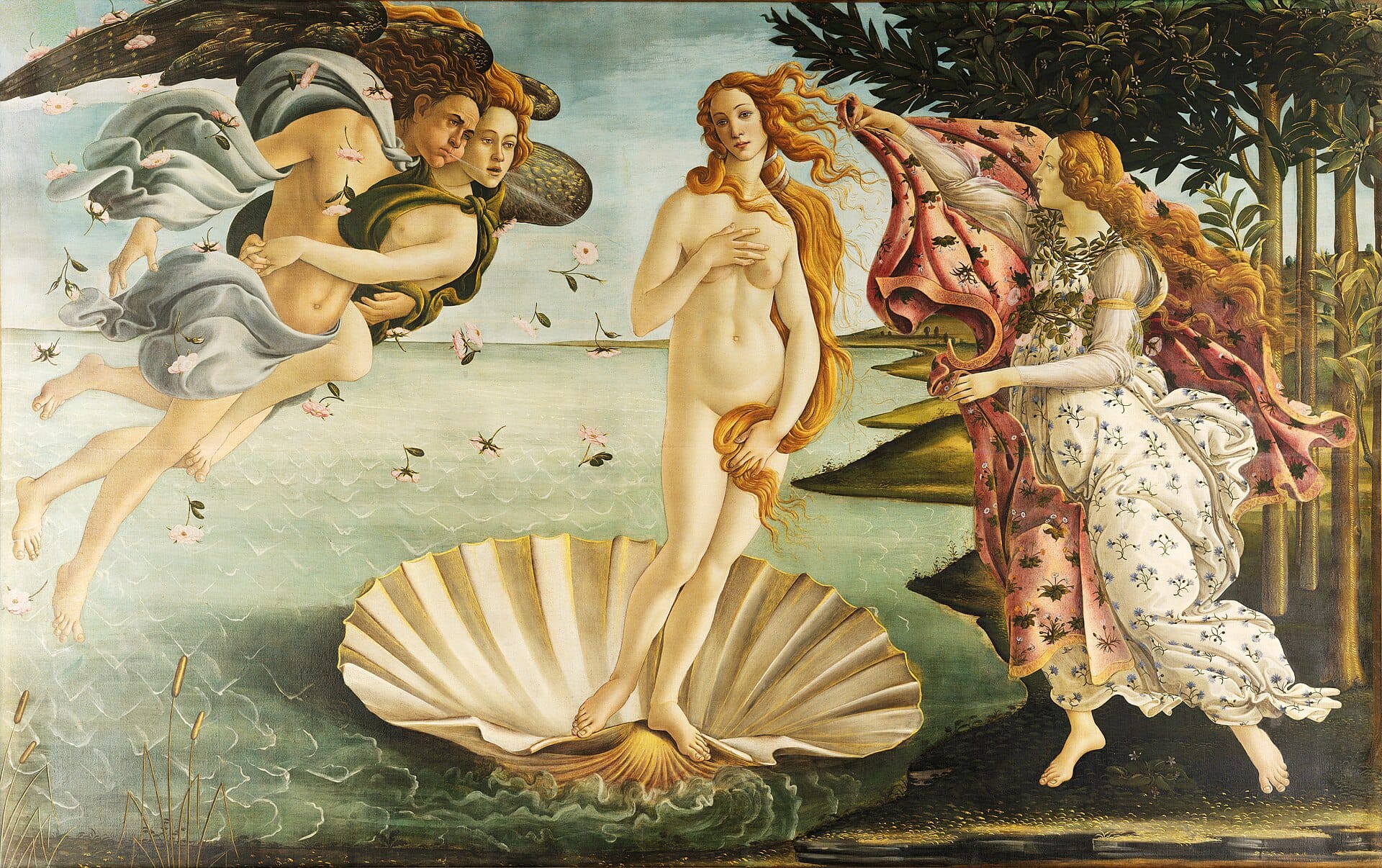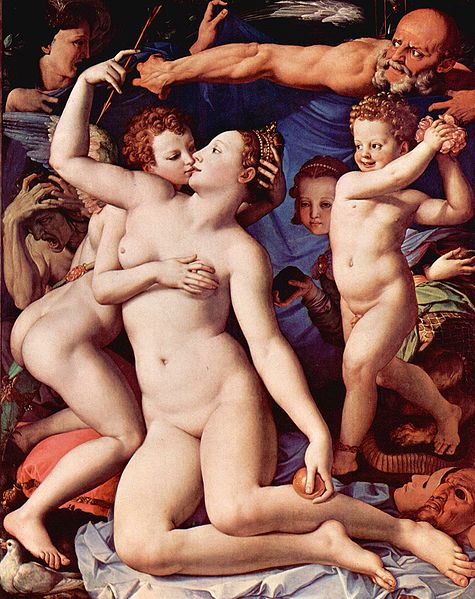Titian's 'Venus of Urbino'


With the revival of Plato's writings in the 15th century, Venus made a comeback, split of course, into naughty Venus Naturalis or Vulgaris - the extravagance of erotic visions shown above in Titian’s Venus of Urbino (1538) - and the demure Venus Coelestis (Heavenly Venus) like in Botticelli’s The Birth of Venus (1484-86) shown below.
Therefore, let there be two Venuses in the soul, the one heavenly, the other earthly. Let them both have a love, the Heavenly for the reflection upon divine beauty, the earthly for generating divine beauty in earthly. – from Ficino's Commentary on Plato's Symposium
Mark Twain affectionately dubbed Titian’s painting “the foulest, the vilest, the obscenest picture the world possesses.” Byron adored it too. And Botticelli’s Venus is one of the most homaged and parodied images in popular culture.

In Lorenzo Lotto's Venus and Cupid (late 1520s or 1540 - disputed), shown at top, traditional critics see a bride and symbols of fertility, while others see hints of incest and alchemy. It's definitely an odd painting and Lotto was one of the oddest painters of the Venetian Renaissance.
The incest is more pronounced in Agnolo Bronzino's Venus, Cupid, Folly and Time (circa 1545), with Cupid on the left grabbing her breast and closing in for an erotic kiss. Venus has the arrow though...

